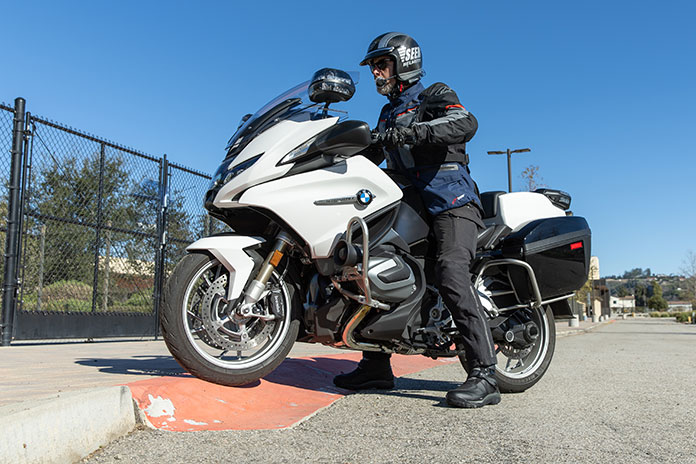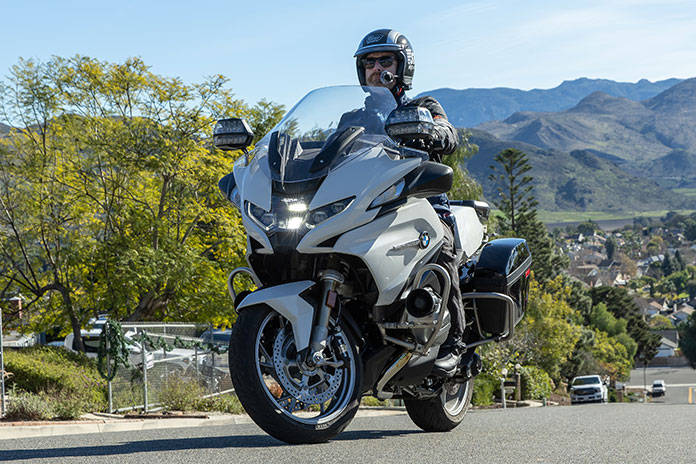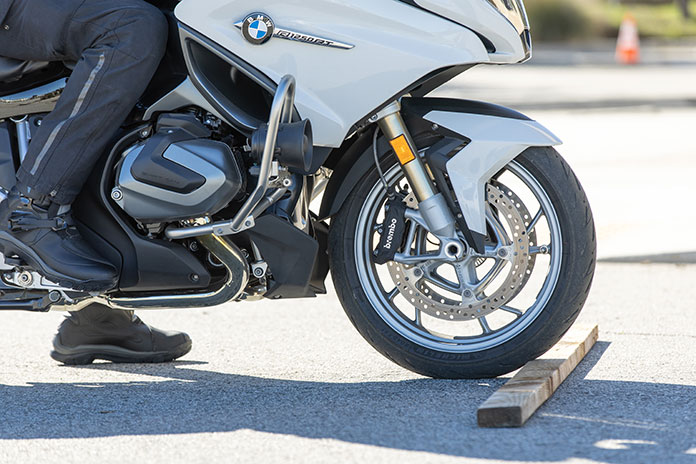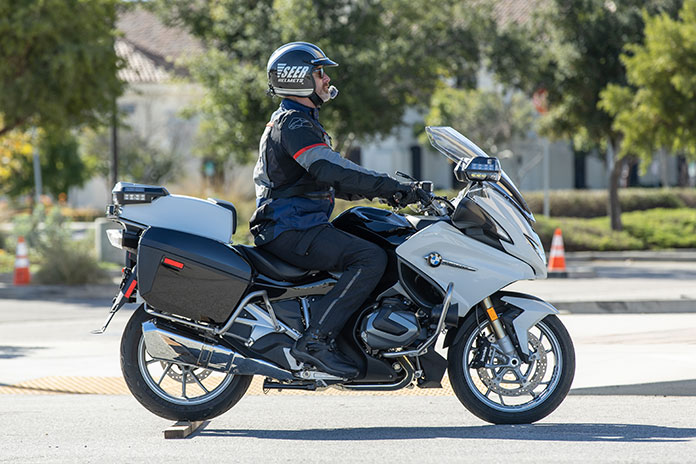
People ask me if I miss being a motor cop. Let’s unpack that. Do I miss washing off petrol and sunscreen at the end of every shift? Do I miss roadside debates about how “everybody was speeding”? Do I miss the tragedy of consoling parents at a fatal accident in the middle of the night? A hard “no” to all of those.
But what I do find myself missing these days is the incessant verbal abuse our motor unit dished out to each other at every opportunity. It didn’t matter how serious or important the moment; if you screwed up, however slight, you were doomed to receive ongoing mistreatment until the next guy came up short.
And there was no better place to experience the hazing than on the grinder where we trained slow‑speed skills every month on our motors. What should have been a place of learning, exploring, and honing of one’s skills was instead a schoolyard of insults, jabs, and finger‑pointing. Simply put, if your bike hit the ground, standby to standby, buddy, your ticket got punched.
Luckily, my bike rarely hit the deck on training days, because I was skilled with my clutch. Don’t get me wrong, my colleagues found ample opportunities to pound me into submission, but sloppy clutch work never made it on the menu.
Now I can’t speak for your sewing circle, but I’d venture to guess you all give each other a pretty rough time on the regular. And just imagine how cool it would be if you had the tools to pull a proverbial rabbit out of your hat every time the speeds slowed down, like for U‑turns, heavy traffic, and parking lots. Well, I have a few simple training tools that will have you laughing, jabbing, and finger‑pointing far more than you typically get to do when riding with your crew.

Before we jump into the actual exercises, we need to rewire our brains a bit and start seeing the clutch (not the throttle) as the control that makes the bike go. In other words, when we’re in slow‑speed environments, we want to have a “set it and forget it” mindset with the throttle and think of the clutch as the primary “gatekeeper” that supplies power to the rear wheel. There are two reasons for this: First, this consolidates two physical tasks of manipulating the controls into one: modulating the clutch. Second, we will have far better mental focus on that singular task, which will improve our sensitivity, dexterity, and control.
Motor School Clutch Control Exercise 1: Driveway Drill
With your engine running at around 1,500‑2,000 rpm, your bike in 1st gear, and both feet on the ground, position your front wheel at the base of a gently sloped incline on a driveway entrance (or similar). You want a short incline that allows the bike to roll back down on its own when you pull in the clutch at the top. (see photo at the top of the article) Next, smoothly, slowly, and calmly begin to meter the clutch out, adding just enough power to the rear wheel to allow you to slowly “walk” the bike up the incline. Remember, leave the throttle alone here and only work the clutch. Once you are at the top, gently pull the clutch in (don’t fully disengage it) just enough to pull power from the driveline so the bike starts to roll back down to our starting point. Rinse and repeat until you can hold a casual conversation with your neighbor as you roll up and back down the incline without thinking about it. And no wise cracks just yet, Nancy, you’re only just getting started.
Motor School Clutch Control Exercise 2: 2×4 Drill

Place a length of 2×4 lumber down on the ground perpendicular to and touching your front tire. Now apply all the same instructions you learned above, and smoothly and slowly “walk” the bike over the board from a complete stop. Continue until the bike is resting with the 2×4 directly in front of the back tire and do it all again. It sounds easy, but there are a couple of rules here: First, you start from a complete stop, so once you “set and forget” your throttle, you can’t manipulate it to prevent stalling or to change the amount of power transferred to the driveline to help get you over the board. Second, when you ride over the 2×4, you don’t pass go if you “shoot” it out from under the rear tire. That’s to say that the 2×4 must stay in place as you ride over. People often struggle to keep the 2×4 in place because they tend to let the clutch out too quickly, sending too much power to the rear tire as it rolls onto and over the board.
The good news? You got it right on your first try. The bad? I’m only referring to you successfully buckling that helmet. Set it up and do it again while I make some calls to confirm you have a real motorcycle license.
Motor School Clutch Control Exercise 3: Incline Drill
Find an incline, such as a hill, a long driveway, or an abandoned loading ramp. Nothing too steep but something that generates decent rolling resistance. Next, stage yourself for lift off by facing up the incline. Once you’ve set your engine speed, smoothly, slowly take off and put your feet on the pegs. Go as slow as possible, using only your clutch to control your momentum. Once you’ve made it 15 feet or so, pull in the clutch and put your feet down. Here’s the rule: Don’t use your brakes to rest on the incline, instead engage only the clutch, and in the amount necessary to hold you in place on the incline as you reset. When you’re ready, do it again, moving slowly toward the top. A word of caution: Don’t fry your clutch with high revs. If the clutch is getting warm or the engine is getting hot, take an easy lap around the block before getting back to work on these drills.
Well, color me amazed. Just wait till your friends see how much better you control your bike when the speeds ratchet down. Now don’t quote me, but if you get your mind right and really work these drills, I’m confident we can finally hack those training wheels off, slap some Girl Scout patches on your leathers, and have you going freeway speeds in no time!
Find Quinn at Police Motor Training. Send feedback to [email protected].
See all Motor School with Quinn Redeker articles here.
The post Motor School with Quinn Redeker: Clutch Situation appeared first on Rider Magazine.
Source: RiderMagazine.com

